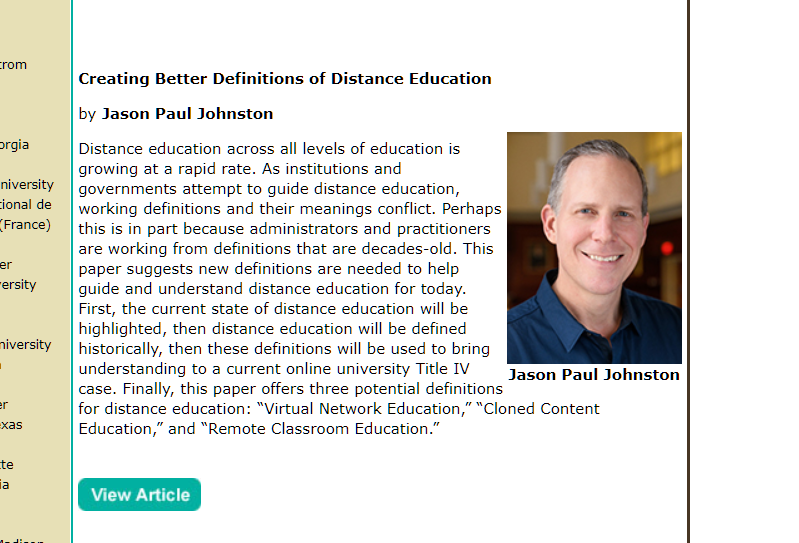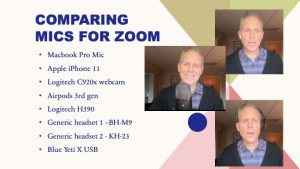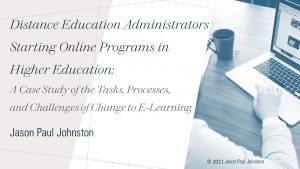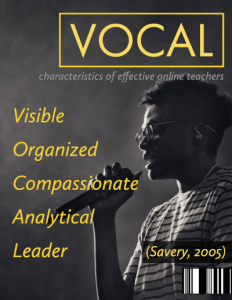Please read and share my latest published article here:
Creating Better Definitions of Distance Education https://ojdla.com/articles/creating-better-definitions-of-distance-education
Especially in the current COVID crisis and with so many universities rapidly moving to what some are called “remote learning,” there is a lot of confusion around the definition of distance education / distance learning. I hope this article helps us move towards better definitions (plural) of distance education so we can move forward into higher e-learning.
Article Reference (APA)
Johnston, J.P. (2020). Creating Better Definitions of Distance Education. Online Journal of Distance Learning Administration, 23(2).
Abstract
Distance education across all levels of education is growing at a rapid rate. As institutions and governments attempt to guide distance education, working definitions and their meanings conflict. Perhaps this is in part because administrators and practitioners are working from definitions that are decades-old. This paper suggests new definitions are needed to help guide and understand distance education for today. First, the current state of distance education will be highlighted, then distance education will be defined historically, then these definitions will be used to bring understanding to a current online university Title IV case. Finally, this paper offers three potential definitions for distance education: “Virtual Network Education,” “Cloned Content Education,” and “Remote Classroom Education.”
Link to the Full-Text Article at the Online Journal of Distance Learning Administration
References / Article Links
Almquist, S. G. (Ed.). (2011). Distributed learning and virtual librarianship. ABC-CLIO.
Black, L. M. (2013). A history of scholarship. In Handbook of distance education (pp. 21-38). New York, NY: Routledge.
Dohmen, G. (1967). Das fernstudium. Ein neues pädagogisches forschungsund arbeitsfeld. Tubingen, Germany: DIFF.
Ginder, S. A., Kelly-Reid, J. E., & Mann, F. B. (2018). Enrollment and employees in postsecondary institutions, fall 2017; and financial statistics and academic Libraries, fiscal year 2017: first look (provisional data). National Center for Education Statistics.
Haworth, M., & Hopkins, S. (2009). On the air: Educational Radio, its history and effect on literacy, and educational technology implementation, Retrieved from https://blogs.ubc.ca/etec540sept09/2009/10/28/on-the-air-educational-radio-its-history-and-effect-on-literacy-and-educational-technology-by-michael-haworth-stephanie-hopkins/
Keegan, D. (1980). On defining distance education. Distance education, 1(1), 13-36.
Keegan, D. (2013). Foundations of distance education (3rd ed.). New York, NY: Routledge.
Kentnor, H. E. (2015). Distance education and the evolution of online learning in the United States. Curriculum and Teaching Dialogue, 17(1), 21-34.
Larreamendy-Joerns, J., & Leinhardt, G. (2006). Going the distance with online education. Review of Educational Research, 76(4), 567-605.
Lederman, D. (2018, January 5). Who is studying online (and where). Inside Higher Ed Online. Retrieved from https://www.insidehighered.com/digital-learning/article/2018/01/05/new-us-data-show-continued-growth-college-students-studying
Lieberman, M. (2019, April 9). Moving forward (at last) on federal rule changes. Inside Higher Ed Online. Retrieved from https://www.insidehighered.com/digital-learning/article/2019/04/09/federal-rules-student-teacher-interaction-accreditation
Matthews, D. (1999). The origins of distance education and its use in the United States. The Journal, 27(2).
Miller, M. D. (2014). Minds Online: Teaching Effectively with Technology. Cambridge, MA: Harvard University Press.
Mood, T. A. (1995). Distance Education : An Annotated Bibliography. Englewood, CO: Libraries Unlimited.
Moore, M. G. (1983). The individual adult learner. In M. Tight, (Ed.), Adult learning and education, 153–168. London: Croom Helm.
Moore, M. G. (1993). Theory of transactional distance. Theoretical principles of distance education, 22.
Moore, M. G., & Kearsley, G. (1996). Distance education: A systems view of online learning: Belmont, CA: Wadsworth Publishing.
Morabito, M. (2018). Origins of CALCampus. Retrieved from http://www.calcampus.com/calc.htm
National Center for Education Statistics. (2018). Digest of educational statistics: 2018, Chapter 3: Postsecondary education. Retrieved from https://nces.ed.gov/programs/digest/d18/ch_3.asp
National Center for Education Statistics. (2019). 2019-20 Survey Materials: Glossary. Retrieved from https://surveys.nces.ed.gov/ipeds/Downloads/Forms/IPEDSGlossary.pdf
National Center for Education Statistics. (2020). Number and percentage distribution of students enrolled at title iv institutions, by control of institution, student level, level of institution, distance education status of student, and distance education status of institution: United state. Retrieved from: https://nces.ed.gov/ipeds/search/ViewTable?tableId=26394&returnUrl=%2Fipeds%2Fsearch%2F%3Fquery%3Ddistance%2520education%26query2%3Ddistance%2520education%26resultType%3Dtable%26page%3D1%26sortBy%3Ddate_desc%26_%3D1583187141338
Panda, S. (2003). Planning and management in distance education. Sterling, VA: Routledge.
Peters, O. (2002). Distance education in transition: New trends and challenges. BIS Verlag.
Pittman, V. (2008). An alien presence: The long, sad history of correspondence study at the University of Chicago. American Educational History Journal 35(1), 169-183.
Saba, F. (2016). Theories of distance education: Why they matter. New Directions for Higher Education, 2016(173), 21-30.
Simonson, M., & Seepersaud, D. J. (2019). Distance education: Definition and glossary of terms (4th ed.): IAP.
Supiano, B. (2017, Sept 21). What you need to know about the Inspector General’s audit of Western Governors U. The Chronicle of Higher Education. Retrieved from https://www.chronicle.com/article/What-You-Need-to-Know-About/241263
United States Department of Education. (2006, November). Federal Register: 34 CFR Parts 668, 673, 682 and 685 federal student aid programs; final rule (Publication Number RIN 1840–AC87). Retrieved from https://ifap.ed.gov/sites/default/files/attachments/fregisters/FR11012006HERA.pdf
United States Department of Education. (2014, February). Title IV of the Higher Education Act programs: Additional safeguards are needed to help mitigate the risks that are unique to the distance education environment. Final audit report (Publication Number ED-OIG/A07L0001). Retrieved from https://www2.ed.gov/about/offices/list/oig/auditreports/fy2014/a07l0001.pdf
United States Department of Education. (2017, September). Western Governors University was not eligible to participate in the 0title IV programs. Final audit report (Publication Number ED-OIG/A05M0009). Retrieved from https://www2.ed.gov/about/offices/list/oig/auditreports/fy2017/a05m0009.pdf
Wedemeyer, C. A. (2010). Learning at the back door: Reflections on nontraditional learning in the lifespan. Charlotte, NC: IAP.
Western Governors University (2018). OIG audit report. Retrieved from https://m2.wgu.edu/oig-audit-report



